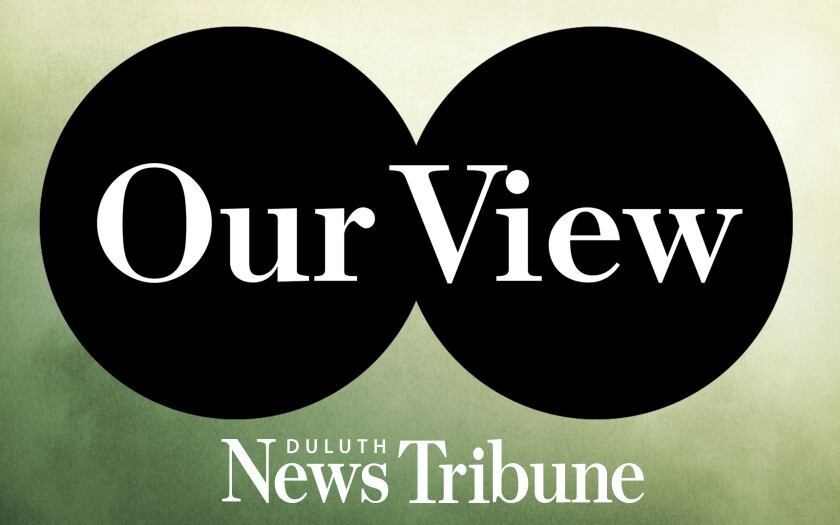The ways Minnesotans have been cared for in hospitals and clinics hasn’t changed much since the days of baby boomers graduating in record-large high school and college classes and then filling jobs. Those boomers are retiring now, however, and in droves. There are far more of us in need of care these days than there are graduates and workers to provide that care, as Dr. David Herman, CEO of Essentia Health of Duluth, has pointed out.
Clearly, new ways are needed to sustainably deliver health care and to continue meeting health care needs in our state.
ADVERTISEMENT
“We have to do something different,” Herman said in an exclusive interview last week with the News Tribune Opinion page.
That something different, Essentia and the University of Minnesota hope, is the partnership they announced in January to pool their resources and to invest as much as $1 billion statewide into a new nonprofit approach to health care.
Essentia, self-described as the state’s premier nonprofit rural health system, and the university, nationally recognized for its academics and research, aim to educate more doctors and health care professionals through their new partnership, enough to meet the growing demand for care from all those aging, getting-sicker boomers, especially in rural areas, like much of Up North here.
“This is putting our heads together and coming up with ideas and concepts,” Herman said. “This allows us to leverage Essentia’s strengths and the University of Minnesota’s strengths to continue to serve all of Minnesota. … This is the beginning of what we think is a very ambitious yet critically important conversation.”
Precisely how this “new integrated care model,” as Essentia and the university referred to their partnership, “would transform Minnesota’s clinical ecosystem,” as they stated is their goal, isn’t clear. This is pretty much a “framework” and a “bold vision” at this point, as the university called it . With input from Minnesotans and stakeholders, details can be worked out in the months and even years ahead.
Just recognizing that Minnesota is graying, how its demographics are changing, and that unprecedented health care challenges are coming is, in itself, encouraging. So is the willingness of Essentia and the university to dive headfirst and together into finding answers and solutions.
“This bold, newly proposed path would shift us away from business as usual and position us … to address our state’s challenges head-on and deliver real transformational solutions,” University of Minnesota President Rebecca Cunningham said in a statement on Jan. 24 . “Our state’s health care providers and leaders, as well as everyday Minnesotans, have said loud and clear that the status quo is no longer working for anyone. We have heard them, and we agree. It is time to forge a new path forward.”
ADVERTISEMENT
Herman said investments as part of that path forward will be made statewide, including, possibly, a long-talked-about new medical school in Duluth in our Medical District, perhaps at the site of the being-demolished St. Mary’s hospital.
More medical training outside the Twin Cities promises more doctors and health care professionals outside the Twin Cities, which would better serve rural communities, where delivering care is particularly challenging.
As Herman said, “Someone’s zip code shouldn’t determine their health outcomes.” And, he said, health care professionals tend to work near where they go to school.
A partnership addressing rural health care needs, as well as the care needs of all Minnesotans, is worth pursuing. Especially one that reflects our changing times and demographics and recognizes that the ways Minnesotans are cared for in our hospitals and clinics demand to change, too.















